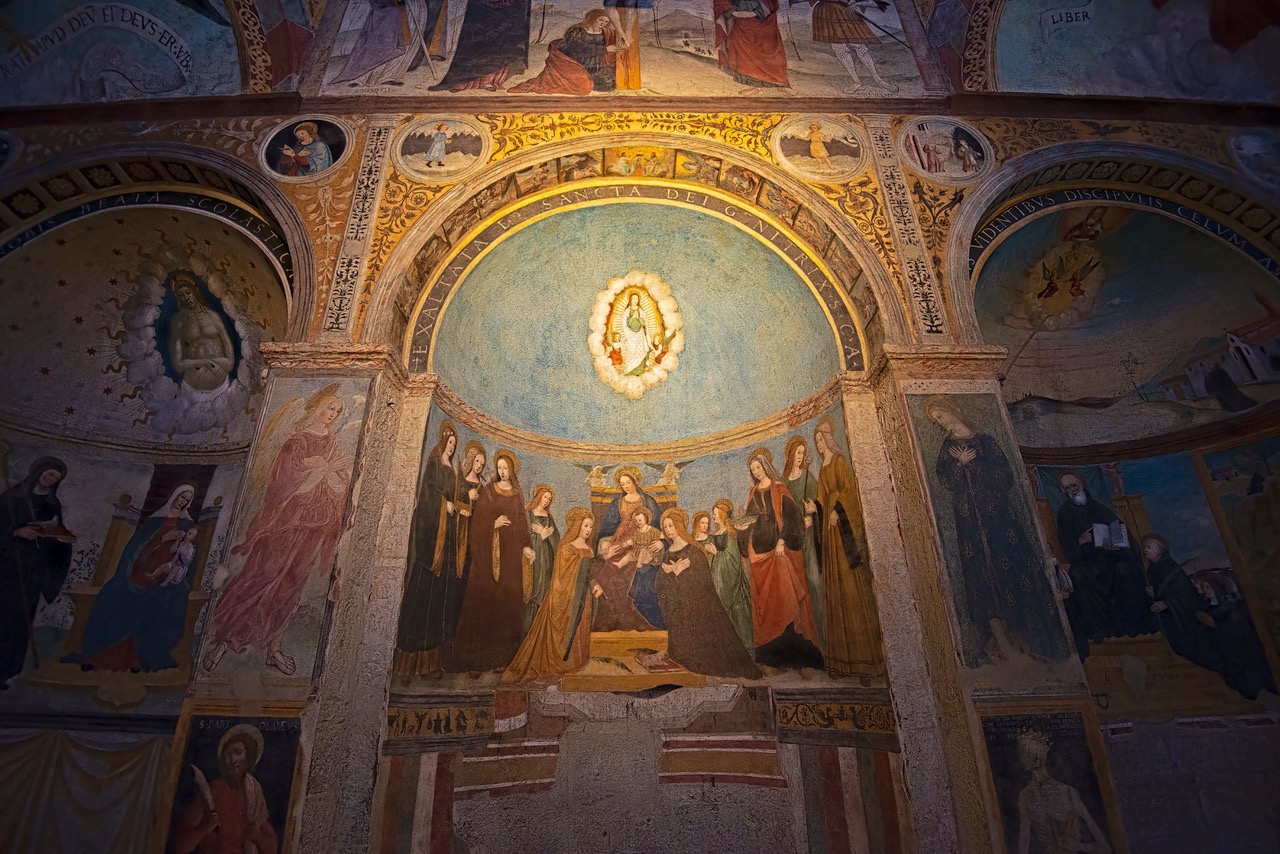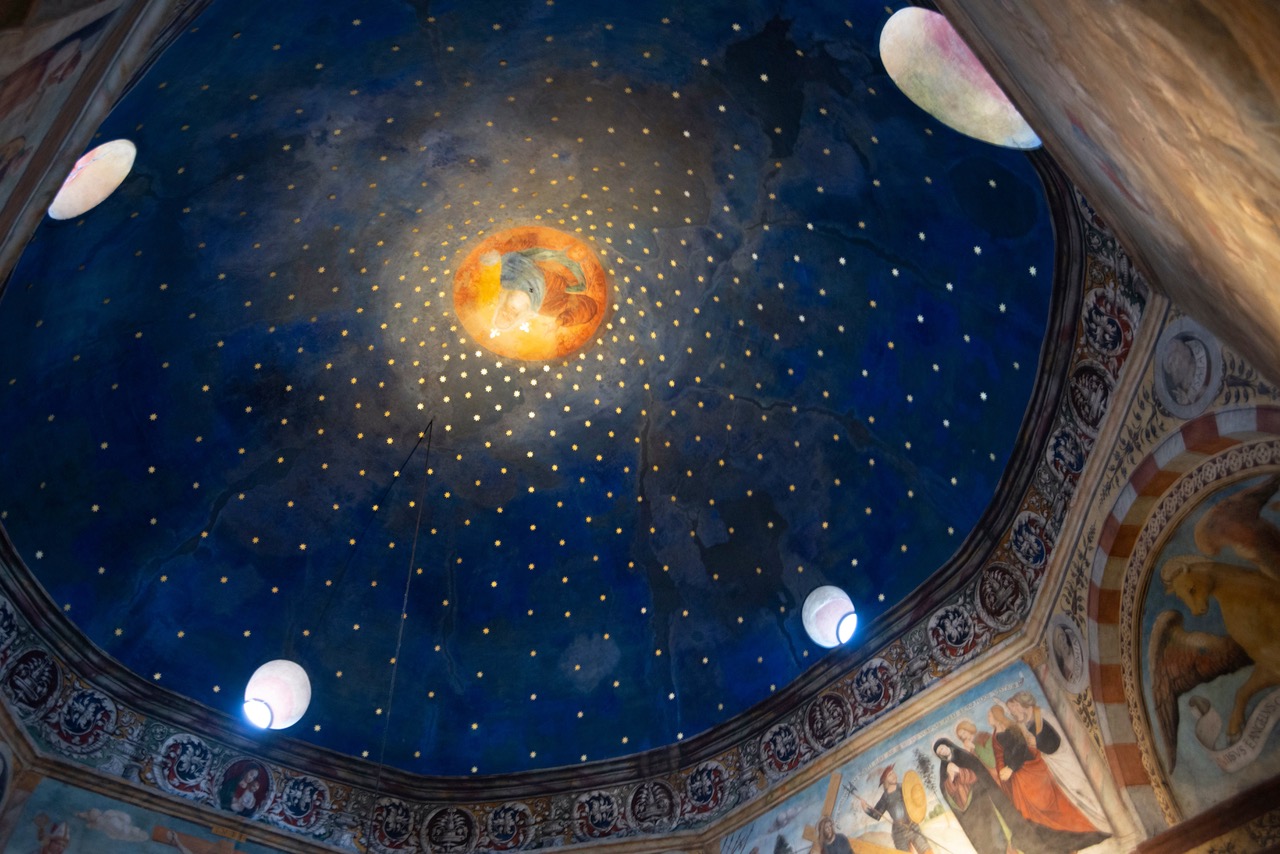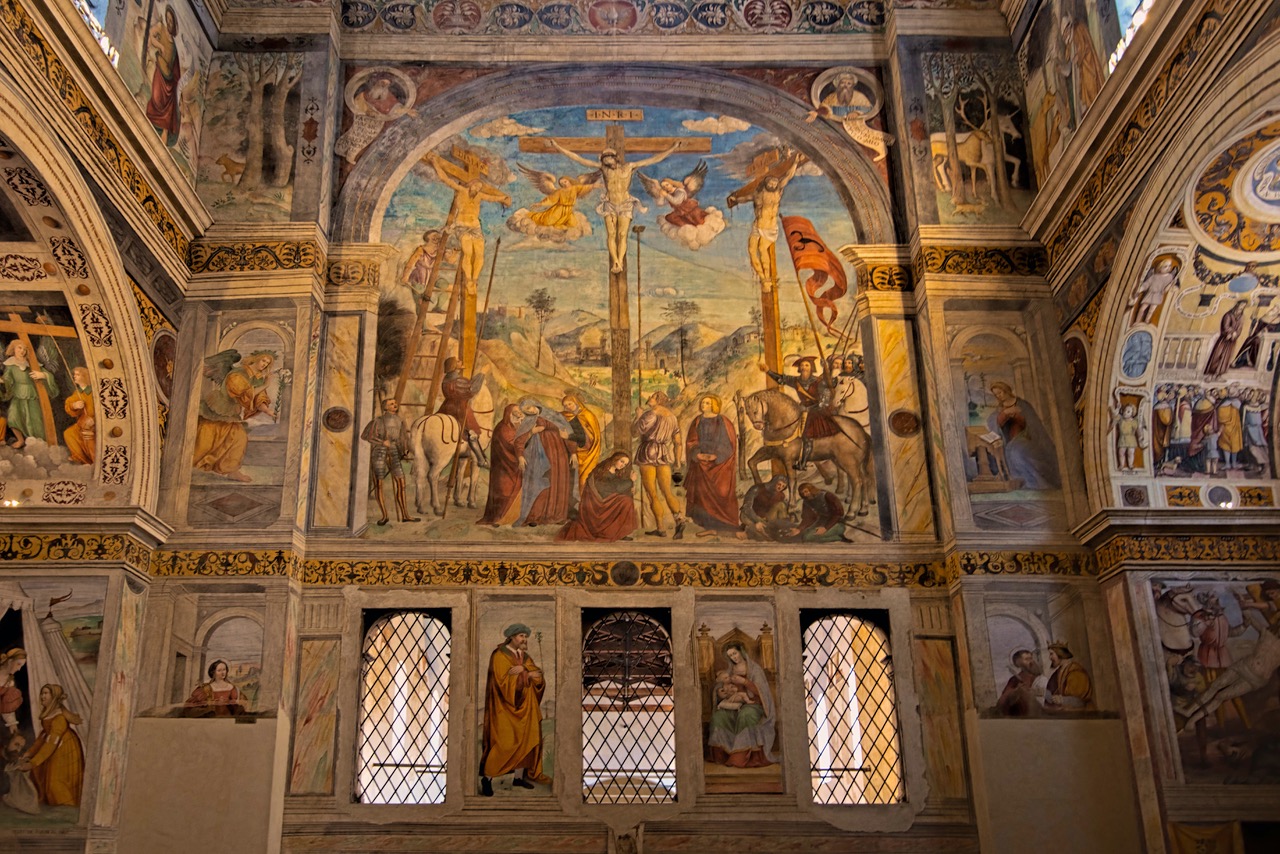San Guilia, Brescia
Female monastery of Benedictine rule, built by the last Lombard king Desiderio and his wife Ansa in 753 AD, San Salvatore – Santa Giulia played a leading role (religious, political and economic) even after the defeat inflicted by Charlemagne against the Lombards .
An amazing place, but don’t think you will see it like the images on the web. I shot photos here for more than an hour, in lighting conditions that were next to impossible. ISO 2000 at 1/30 second with post stabilization and correction. The place was nearly blacked out from lack of light, on purpose to maintain the frescos. But it was great. I share a few of the images I got, all hand-held by the way.


And the nun’s quarter’s chapel





These frescos are magnificent. When I see images like this, so many questions come to mind. How many artists were involved in the painting of these? How long did it take? Were they trained as artists from young childhood, or did they develop that skill as an adult? I love that people could see the story of the Savior, and understand it, even if they were unable to read. Just seeing these, I marvel at what the Creator has enabled men to do. How many humans have been inspired by works of art such as these, to participate in developing and expressing the talents given to them?
The facade of the medieval church of Santa Maria in Solario faces onto Via Musei.
It is Romanesque in style and was built in the mid-12th century as the nuns’ chapel.
The lower room is square in plan, with massive ashlar walls in local limestone which incorporate fragments of Roman inscriptions. The octagonal vaulted upper chamber is girdled by a decorative gallery of small Early Medieval columns and capitals (8th-9th century AD).
An atmospheric staircase built inside the wall connects the two floors of the church.
On the ground floor, a large Roman altar is re-used as a central pillar and precious objects dedicated to the cult of sacred relics, the monastery’s treasure, may be seen: the Lipsanoteca, a carved ivory box (4th century AD) and a reliquary cross of gold, pearls and semiprecious stones (10th century AD).
The upper floor, which has a more intimate atmosphere, was used for the most important ceremonies of monastic worship. Under the starry vault, frescoed – like the walls – by Floriano Ferramola between 1513 and 1524, visitors can admire the Cross of King Desiderius, a rare example of metalwork from the early Carolingian era (9th century AD), decorated with a total of 212 gems, cameos and glass paste ornaments, some dating from the Roman and Lombard periods.